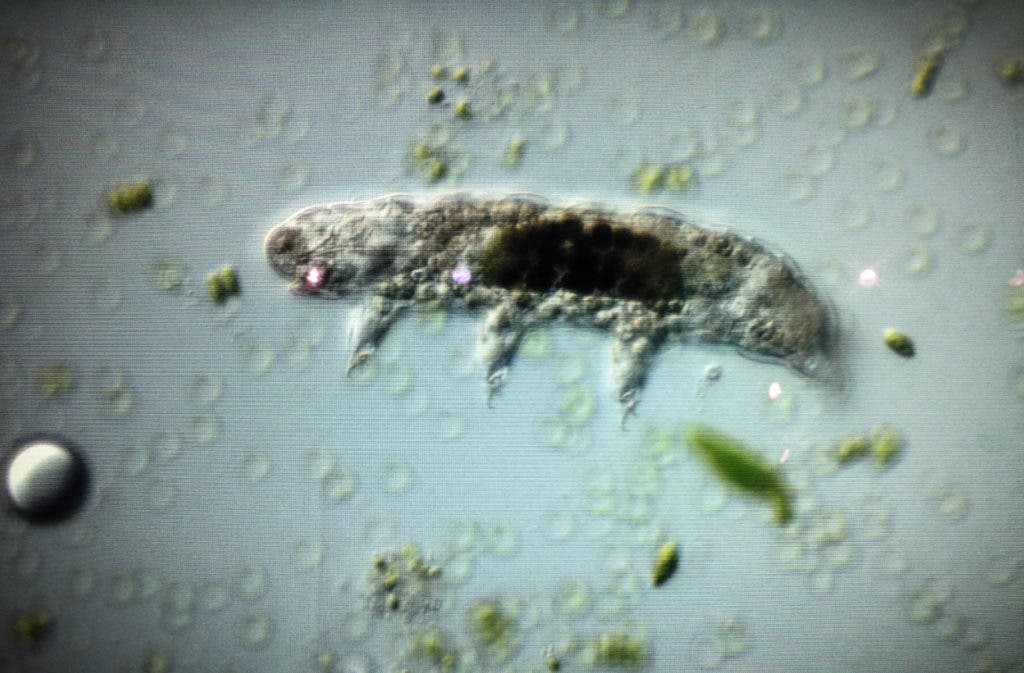A group of microscopic, near-indestructible creatures called tardigrades, also known as water bears, could now be living on the moon after the Israeli probe Beresheet crash-landed earlier this year, according to the group that loaded them onto the spacecraft.

Tardigrades can survive in almost any environment and it’s even possible to bring them back to life after a 30-year deep freeze. As “extremophiles,” they can shut down their metabolism and survive in hostile conditions for long periods. Now the question if they can even survive in space.
“We believe the chances of survival for the tardigrades are extremely high” based on an analysis of the crashed probe’s trajectory and the device in which the creatures were stored,” Nova Spivack, whose Arch Mission Foundation is dedicated to spreading “backups” of human knowledge and terrestrial biology beyond Earth, said.
Back in April, an Israeli spacecraft called Beresheet, which carried thousands of dehydrated tardigrades crashed on the moon. The Israeli spacecraft was also transporting Arch Mission’s first lunar library, a digital archive holding the equivalent of 30 million pages of information.
Based on Arch Mission’s analysis of the spacecraft’s path as well as the makeup of the lunar library itself, Spivack said he’s confident the library, a “DVD-sized object made of thin sheets of nickel,” survived the crash mostly intact. That doesn’t mean the water bears are in good shape.
“About the tardigrades in the Lunar Library: Some are sealed in epoxy with 100 million human, plant and microorganism cells,” Spivack tweeted. “Some are encapsulated onto the sticky side of a 1cm square piece of Kapton tape that is sealed inside the disc stack. They cannot reproduce on the moon.”
Tardigrades are famous for being able to survive the most extreme conditions, so if they didn’t burn up in an explosion as the probe crashed to the lunar surface, they could theoretically survive for years, capable of withstanding huge amounts of radiation, heat, and cold, according to NASA biologist Cassie Conley.
But they’d need air, water, and food to grow, reproduce, and form a colony, fellow tardigrade expert William Miller argued, and the chance of another spacecraft coming to their rescue is slim.
The moon formed more than 4 billion years ago. For the entirety of its existence, it has been a completely sterile place. Humans first brought life to the moon 50 years ago with the Apollo mission, in the form of microbes hiding in feces and other human waste. And now, it has tardigrades too.


